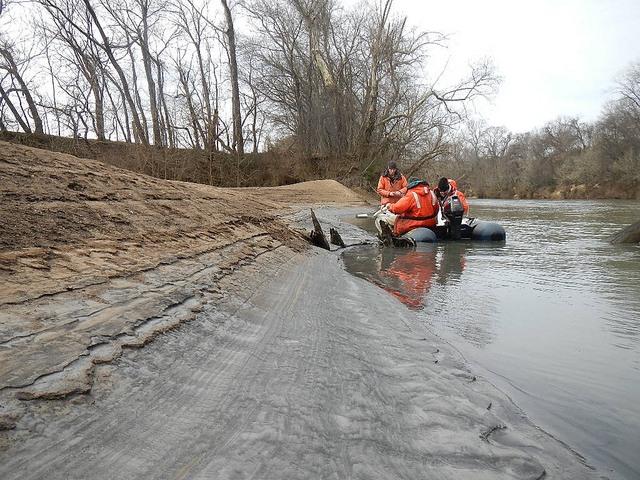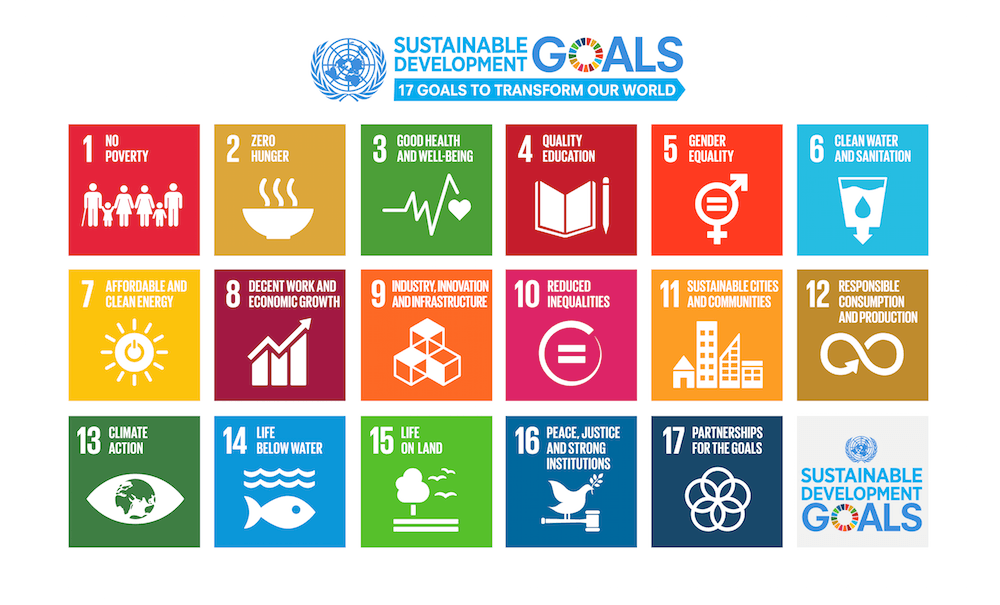My Inconvenient Truth: Reflections on Al Gore's Impact 10 Years On


In May of 2006, Al Gore's now-classic climate change documentary "An Inconvenient Truth" was released. The movie won an Oscar in the Featured Documentary category, and Gore was co-recipient of the Nobel Peace Prize, along with the U.N. Intergovernmental Panel on Climate Change (IPCC). The nominating committee recognized Gore and the IPCC "for their efforts to build up and disseminate greater knowledge about man-made climate change, and to lay the foundations for the measures that are needed to counteract such change."
For many, it was as if Al Gore invented global warming. Or that global warming invented Al Gore, I'm not sure which. What is certain is the enormous impact the movie and Gore's advocacy through the years had on raising awareness about the, well, inconvenient truth of climate change.
To be perfectly candid, I think "raising awareness" is among the canon of over-hyped phrases like "paradigm shift." Meaningful at their core, these idioms are overused, often with a pretentious tinge, to the point of diffusing much of their impact and credibility. This is ironic given that we live in transformative times ourselves, witness to a global paradigm shift of raised awareness.
It's tricky.
I read Gore's 1992 nonfiction book "Earth in the Balance," so I was no stranger to his environmental advocacy. But "An Inconvenient Truth" brought the issue to the forefront of public consciousness like little did before or since (except the changing climate itself), for better and worse. I can only speak anecdotally, but I believe Gore is likely the most famous straw man alive -- and for some, also the most reviled. He raised awareness about global warming so masterfully that he has become synonymous with it, often not in a good way.
This may sound like I'm being critical of his work. If I do admit some ambivalence, it is not for lack of admiration and inspiration for what Gore has done and is doing in the public campaign to push for climate action. I've heard Gore speak on several occasions. I've gone through his Climate Leadership training. He is passionate and sincere about his work.
Perhaps my ambivalence is directed more toward the climate change narrative itself than to Gore's engagement with it. It is a narrative too often oversimplified, tortured beyond all recognition of civility and imbued with an ideological fervor that has little to do with the task at hand.
And it's for all this that I'd like to take the opportunity of the 10-year anniversary of "An Inconvenient Truth" to thank Al Gore for changing my life.
An inconvenient journey
I can't say exactly when I first learned about climate change, but it was long before Gore's movie. I'd also read other cautionary works like Jeremy Rifkin's early work "Entropy," Paul Ehrlich's "Population Bomb," Robert Heinberg's "The Party's Over" and The Club of Rome's "Limits to Growth," among others.
From a very young age I was a budding Malthusian.
But while contemplating this doom, I also found great joy in the beauty of the world around me. My ambivalence was my own.
I acquired the domain name "globalwarmingisreal.com" several years earlier, but after seeing "An Inconvenient Truth" in May of 2006 I decided to focus my efforts on what I cared about most and launched the official blog GlobalWarmingisReal.com (GWIR). It was a humble launch, but 10 years on it is still going strong.
What's more, I've had an opportunity to temper my general Malthusian worldview with a sense of guarded optimism. While I've endured over the years the expected heaving of hate and fear, I've also seen firsthand the hard work of many talented, passionate and brilliant people focused on moving the world toward a better future. That's what gives me inspiration to engage with these pathfinders, tell their story and each day try a little bit harder to help light the way.
"Few will have the greatness to bend history itself," Robert Kennedy said in a 1966 speech in South Africa, "but each of us can work to change a small portion of events. And in the total of all those acts will be written the history of this generation." We all have within us the power to send out "tiny ripples of hope" that will converge into a mighty current of sweeping renewal.
Few of us have the influence or reach of Al Gore, but we all have a responsibility to pursue the harder path before us, so that others may follow. Each in our own way.
Is Al Gore the reason I am concerned about global warming? No. But Gore and his documentary helped set me out on the path I am on today, and upon which I intend to remain for the rest of my life
"My heart is moved by all I cannot save:
so much has been destroyed
I have to cast my lot with those
who age after age, perversely,
with no extraordinary power,
reconstitute the world."
-- Adrienne Rich
Duke Energy Gets 8 More Years to Clean Up Toxic Coal Ash in North Carolina


If new guidelines issued Wednesday go through, Duke Energy will have eight more years to clean up coal ash deposits in North Carolina. The proposed framework sets prioritized deadlines for Duke Energy to clean up more than 30 coal ash sites that serve as depositories for the company's lingering coal-fired plants.
Under the proposed guidelines, Duke Energy will have until 2019 to remove and close down toxic coal ash deposits at eight sites deemed "high priority" across the state, ruled North Carolina's Department of Environmental Quality. They include two deposits on the Dan River, the site of a 39,000-ton coal ash spill in 2014.
The company would have until 2024 to clean up the remainder of its 33 ash deposits, all of which have been rated as "intermediate priority." Under the state's Coal Ash Management Act of 2014, the company was ordered to phase out the use of such deposit sites, which are considered responsible for the pollution of rivers and streams in the state, and the new guidelines acknowledge that obligation.
But according to Waterkeeper Alliance and the Sierra Club, the proposed guidelines don't address the urgency of the problem. They can also be modified at a future date, a condition that was requested by Gov. Pat McCrory's office and allows for the proposed guidelines to be reviewed in 18 months.
The McCrory administration suggested that the time-frame may be too stringent for the company to complete, as Duke estimated that it may cost as much as $10 billion. Closing out the antiquated deposit sites requires Duke Energy to dig up the coal ash and deposit it in lined landfills away from key water sources.
"The deadlines in the coal ash law are too compressed to allow adequate repairs to be completed,” said Donald R. van der Vaart, secretary to the state's Department of Environment and Natural Resources.
But Waterkeeper Alliance attorney Pete Harrison said that the new guidelines, and the ability of the state to change them at will in a couple of years, indicate the McCrory administration's unwillingness to take the environmental risks seriously and force Duke Energy to clean up the coal ash.
"[The McCrory] administration is making a mockery of the law and continuing to cower away from taking one iota of meaningful action to clean up leaking coal ash dumps," Harrison said in a statement last Wednesday. "To this day, McCrory’s DEQ has not required Duke Energy to clean up one ounce of coal ash anywhere in the state.”
McCrory's administration is no stranger to criticism when it comes to its stance on Duke Energy's coal ash problem. The environmental lobby has long accused McCrory, a former employee of Duke Energy, of taking steps that benefit the energy company. These same actions, critics say, also help to weaken environmental protections by restricting the actions of the state's environmental regulators. In 2014, following the Dan River spill, the DENR and Duke Energy became the focus of a federal investigation.
While the governor's office maintains impartiality when it comes to regulatory investigations of Duke Energy's coal-fired plants, recent investigations by media and environmental organizations offered some troubling questions about the regulation of the state's largest power company.
In June 2015, as the U.S. Environmental Protection Agency was closing out its monitoring of the Dan River following the coal ash spill, McCrory met for dinner with Duke Energy officials at the state mansion, reports North Carolina-based WRAL News. The governor's office and DENR declined to discuss details of the meeting other than to say that it related to the "economy, the environment, energy and job creation."
But a deposition of the state's former epidemiologist rekindled concerns about how the company's coal ash is being managed, and the priorities that are being set at the state level. According to a statement from epidemiologist Megan Davies taken under oath, efforts to advise residents near to coal ash deposits not to drink water from their wells was rescinded by the McCrory administration much too soon.
State law required the Department of Health and Human Services to monitor wells for contaminants related to the spill, which her office did. Residents were issued "do not drink" advisories in 2015. In March 2016, the advisory was cancelled, even though the spill was still being monitored for the carcinogen hexavalent chromium, which has the potential to leach into water systems from unlined coal ash deposits.
Davies' deposition asserts that the change in policy followed a high-level meeting in June 2015 concerning the "do not drink" notices in which Secretary van der Vaart and Duke Energy attorneys were both present.
McCrory's office and North Carolina Department of Health and Human Services officials are also under federal investigation related to hiring and contract practices that investigators say may violated federal law.
Flickr/USFWS
Athletes Score Free Anti-Zika Condoms for Rio Olympics


The upcoming Olympic Games in Rio de Janeiro are festering plenty of worries, including unfinished infrastructure, the social and political instability in Brazil, and the fact that many companies are downplaying or avoiding involvement with the first Olympics held in South America. Then there are the ongoing fears and confusion over the Zika virus, which in the meantime piqued the interest of those who see economic opportunities in this health crisis.
The world still has not formulated a unified response to the Zika outbreak, and the suggestions on how to live in a world where Zika spreads are all over the map. Of course, there are the suggestions that abstinence can help stop the transmission of Zika. But that will not be the reality at an event where thousands of fit bodies will meet during an intense two-plus weeks in, of all nations, Brazil. One star athlete, U.S. women’s soccer goalkeeper Hope Solo, who at first said she would not go to the Rio Olympics over concerns about Zika, has changed her mind but said she will not leave her hotel room — but that will most likely not be the case for the estimated 10,000 athletes traveling to Brazil this August.
One Australian company, Starpharma Holdings, sees a branding opportunity with worries over Zika. The company announced that it will partner with the Australian condom manufacturer Ansell and supply the Australian Olympic team with condoms that the companies say can offer antiviral protection against Zika.
According to a Starpharma announcement made earlier this month, an antimicrobial agent included in one of its condom product lines, VivaGel, could prevent sexually transmitted infection from the Zika virus. The company did not mention the name of the organizations leading the laboratory studies, but the company’s CEO Dr. Jackie Fairley said this study could lead to a “significant commercial opportunity.” And these Ansell condoms with VivaGel lubricant will make their appearance in the Olympic Village.
Not everyone is convinced that condoms with an anti-Zika ingredient, whether rigorously tested or not, can make a difference in preventing the spread of the virus.
As Salon writer Kate Baggaley recently pointed out, the hype surrounding these condoms is not necessarily justified. The proper use of the condom, rather than the anti-viral ingredient added, is what most experts agree is key to preventing the spread of sexually transmitted diseases. Planned Parenthood has long held to the statistic that, when used correctly, condoms are 98 percent effective — but in real life, that rate falls to 82 percent as human error comes into play, as with any product or gadget. And the perceived hassle and inconvenience is why the Gates Foundation funded a grand challenge to develop next-gen condoms: But three years later, the outcome of that effort has largely been silence. Meanwhile, condom usage worldwide amongst men is pitifully low, while 2 million people worldwide were newly infected with HIV in 2014.
Nevertheless, give Starpharma credit for thinking ahead. While the company says it is focused on providing the Aussie team with these free condoms, there should be plenty to pass around. According to press reports, 350,000 male condoms, 100,000 female condoms and 175,000 sachets of lubricant will be available at free vending machines in every Olympic Village building.
Image credit: Ansell
Is Your Business Aligned with the U.N. Sustainable Development Goals?


By Clinton Moloney and Don Reed
2015 was a pivotal year in turning the tide on major sustainability issues. One of the key drivers of this shift was the release of the United Nations’ (U.N.) Sustainable Development Goals (SDGs) last fall, aimed to propel the business community and the whole world to align their corporate strategies to help make real progress on social, economic and environmental issues for years to come.
The 17 SDGs make up a cohesive environmental and social sustainability vision that serves as a call-to-action for governments, civil society, and businesses to rethink their core strategies, missions and values and contribute to these goals in an overall effort to have positive, lasting contributions to our quality of life and our planet.
The SDGs will function as a vehicle that will allow businesses to find the intersection between where they can contribute to society and their core business values and purpose. And at a fundamental level, a business that is operating in a way that is aligned to solving major societal challenges will be more resilient over the long term. Companies are usually clear on the positive impacts they’re already having on society. The SDGs offer a new lens to look at and communicate the social issues they currently have the most bearing on, and where they may fall short.
Global expectations are already high for the SDGs, but what about the perception among U.S. businesses? For one, there’s a high awareness level among U.S. corporations – recent PwC research found that more than 90 percent of businesses are familiar with the SDGs. Moreover, companies are already considering their own impact on the SDGs with some 40 percent planning to conduct an annual review to assess that impact.
Businesses have a real opportunity to turn the complexity of the global goals as part of their overall corporate strategy. But what are the best practices and processes for supporting the SDGs and kicking off the process of embedding them into their fundamental business framework?
We’ve identified four key steps companies need to take to commence successful engagement with the SDGs:
- Determine the impact your business and its value chain have on each of the SDGs, both directly and indirectly. Governments may have different priorities for the SDGs, so for global companies, it’s critical to understand in detail each country’s priorities where business operates.
- Agree on the methodology and measure your business impact across all these SDGs. Data and analytics can help you understand where your business has a positive or negative impact on each SDG. There are tools available that can help provide total impact measurement.
- Incorporate the learnings from your measurement into business planning and strategy to prioritize reducing negative impacts and increasing the positive. This will lead to the ability to prove your role in the SDGs.
- Communicate your business goals and achievements consistently with the SDGs. Outside of sustainability reports, these impacts should be integrated into overall company communications such as annual reports, SEC filings and customer communications.
Many companies are looking to adopt the goals that are the most relevant to their businesses and where they can contribute the most to society, as well as areas where they are able to engage their stakeholders. For example, a pharmaceutical company may concentrate on good health and well-being (goal No. 3), while a major consumer brand that targets female retailers may start with its impact on women and equality (No. 5).
Aligning specific SDGs to business growth strategy works well as long as companies understand where they have impacts across all the goals – positive or negative – and can gain a complete perspective of their sustainability opportunities. And after corporations get a handle on communicating the issues where they already have known business value and positive impact in SDG terms, they can move on to uncover new opportunities to have an impact in other areas.
Making a smooth transition to this new model where SDGs play a central role in operational considerations as well as planning, reporting and strategy could make all the difference in helping to achieve the SDGs.
Image credit: United Nations
Clinton Moloney is PwC's U.S. Sustainable Business Solutions Advisory Leader
Don Reed is a Managing Director in PwC’s U.S. Sustainable Business Solutions Practice
©2016 PwC. All rights reserved. PwC refers to the U.S. member firm or one of its subsidiaries or affiliates, and may sometimes refer to the PwC network. Each member firm is a separate legal entity. Please see www.pwc.com/structure for further details. This content is for general information purposes only, and should not be used as a substitute for consultation with professional advisors.
Tips for Working Mothers to Help Balance It All


By Sean Morris
Moms are often expected to do it all. They have full-time jobs, but also handle the majority of chores at home that keep the family running smoothly. As a working parent turned stay-at-home dad, I understand how difficult it can be to juggle family and career -- but it's possible, if you find the right balance.
Whether you’re a stay-at-home mom re-entering the workforce or a frazzled working mom seeking some relief, here are a few tips to reduce your stress and find some balance between work and home.
1. Create time for yourself
This cannot be stressed enough. A lot of people think that the key to being successful is simply working more hours. For many moms, “getting it all done” means they’re simply working all the time, whether they’re finishing up a client project or completing the household chores. But when it comes to your work and home responsibilities and the amount of time you devote to completing them, think quality not quantity.
When you take time for yourself, you’ll actually be less stressed and more motivated while at work, and you’ll have time to recharge and rejuvenate so that you actually enjoy the time you spend with family.
2. Live in the moment
It's been said before that women can multitask like no other. While this is true, working mothers will find that they can get a lot more done if they concentrate on one thing at a time. Fully dedicate yourself to one to-do item on your list. Chances are you’ll get it done more quickly and feel less frazzled in the process.
3. Create a battle plan for each and every day
There is something to be said for immaculate organization. It is very rare that you meet a disorganized person who still manages to get a lot done. Organization can play a major role in helping you get more done without feeling like you’re having to be busy all the time. With a battle plan in place, you can check items off your to-do list and feel accomplishment rather than exhaustion.
4. Don't forget to appreciate the fruits of your labors
If you can’t enjoy the raise you just got at work or the delicious dinner you prepared for yourself and your family, then what’s the point? When you have a big win, take time to savor it. No matter how you split it, working moms will end up putting in a lot of time at the office and at home. So, when all your hard work pays off, reward yourself by doing something you enjoy.
--
There is no doubt that the lifestyle of a mom who also holds a full-time job is a challenging one. What’s important to remember is that you don’t have to feel rundown and overworked all the time. When you take some steps to insert balance into work and life, you’ll start to feel a lot better.
Image credit: Pixabay
Sean Morris is a former social worker turned stay-at-home dad. He knows what it’s like to juggle family and career. He did it for years until deciding to become a stay-at-home dad after the birth of his son. Though he loved his career in social work, he has found this additional time with his kids to be the most rewarding experience of his life. He began writing for LearnFit.org to share his experiences and to help guide anyone struggling to find the best path for their life, career, and/or family.
Norwegian Sovereign Wealth Fund to Sue Volkswagen Over Emissions Scandal


Eight months after the Volkswagen emissions scandal rocked Germany’s iconic automaker, the repercussions still refuse to go away. In addition to the class-action lawsuits underway here in the U.S. and promised buy-back program that could involve up to 500,000 cars, institutional investors also yanked Volkswagen’s chain over what they say are the company’s diminished brand reputation and financial performance.
Many shareholders are upset with what they call a lax corporate governance structure that allowed the rigging of emissions tests to fester until September 2015. Now, one European sovereign wealth fund will sue Volkswagen over what it says are financial losses due to the auto manufacturer’s recent struggles in the global securities markets.
Norges Bank Investment Management (NBIM), which manages Norway's 26-year-old Government Pension Fund Global, told the Financial Times this week that it will join a forthcoming class-action lawsuit in Germany.
The $851 billion fund, which is one of Norway’s funds charged with securing the country’s social welfare system long after its oil reserves run dry, says its losses in the wake of the emissions scandal have run into the hundreds of millions of dollars. The fund also expressed doubt over Volkswagen’s claims that the emissions fiasco was the result of a few “rogue engineers.”
As Petter Johnsen, the fund’s chief investment officer, told FT: “Volkswagen management should have known about the manipulative engine-management devices.”
According to Bloomberg, NBIM owns at least 1.6 percent of Volkswagen, so it has a huge stake in seeing the company’s performance improve — or recouping its losses if the company never recovers.
Meanwhile, in order to account for the financial losses that have totaled as much as $18 billion resulting from the emissions scandal, Volkswagen reduced its dividends to shareholders by 97 percent — and may even eliminate such payouts to shareholders this year.
Activist investors, such as TCI Fund Management, complained that Volkswagen’s executives are still tone-deaf even after the emissions crisis, as the automaker’s executives allegedly still paid themselves far too handsomely when those figures are juxtaposed against the company’s recent financial performance.
Watch for NBIM to make the case in Germany that Volkswagen’s actions also hurt the automobile industry at large. In a quarterly report issued last year, NBIM claimed that its holdings in consumer goods stocks led to a loss of 5.8 percent, largely due to Volkswagen’s admissions in rigging auto emissions tests worldwide.
And while companies across several sectors offset some of the Norwegian fund’s recent losses, Volkswagen joined its competitor Daimler AG, along with the mining company Glencore, as contributing to a difficult ending for NBIM in 2015. Those links will be challenging for Volkswagen to explain away in the court of law.
Image credits: Mahlum/WikiCommons
This Strawberry Ad About Food Waste Gives Us All The Feels


The key to any successful marketing campaign is to tap into the emotions of your audience in some way. Social marketing is no different. In order to get people to change their behavior, they have to actually feel something. And, in a world where we are constantly inundated with content, forward-thinking brands are developing creative ways to cut through the noise and speak to consumers in new ways.
Ironically, the best way to forge a meaningful connection with consumers is through one of the oldest forms of communication known to man: storytelling. Humans are hard-wired to tell and listen to compelling stories. Stories create empathy, and empathy creates change.
The Ad Council’s Save the Food campaign is a fantastic example of how powerful storytelling can influence social marketing efforts. The oddly emotional campaign sheds light on the sad reality that more than 40 percent of all food purchased in the U.S. each year goes to waste. This amounts to over $162 billion annually that is quite literally thrown in the trash.
To illustrate this issue, the Ad Council, in collaboration with SapientNitro, produced a compelling two-minute video that's giving people all over the world the feels. The video follows the epic journey of a single strawberry from its time on the vine to ultimately ending up rotting in the trash of a typical American family.
https://www.youtube.com/watch?v=WREXBUZBrS8&feature=youtu.be
The project was produced pro-bono by SapientNitro, an agency specifically focused on storytelling across brand, digital and commerce. The campaign primarily targets moms, because they typically “make more of the decisions around food — planning, shopping, cooking and disposing,” explained Gary Koepke, North American chief creative officer at SapientNitro.
“Millennials are also a key audience,” he said, because they are "engaged and idealistic about helping the environment" and show an interest in "life hacks that help them experience more and waste less." The campaign website features a clear, actionable list of ways to eliminate food waste in the home.
This is the most important aspect of any social marketing campaign. So now that I feel something, what do you want me to do? Through the website, consumers can get tips on how to plan meals ahead of time, use leftovers and store food so that it lasts longer.
Print, Web and out-of-home ads are also in the mix that urge consumers to "Cook it. Store it. Share it." rather than prematurely trash milk, eggs, bread and chicken. The clean, minimal, uncluttered art direction is also a highlight of the campaign. As a design-obsessed, eco-conscious millennial (the target demographic), I can’t wait to share the ads on my website and social media channels.
All in all, it seems like this campaign is a hit. However, the true success is in measuring its social impact over time. Unlike hunger, pollution, poverty and other global issues that may seem insurmountable, it is possible to eliminate food waste in our lifetime -- and the actions we can take to do so are largely painless. It’s just a matter of getting people to care about the issue and equipping them with the tools to do something about it.
Image credit: Save The Food
How A New Micro-Loan Program in Haiti Strengthens a Responsible Supply Chain


By Kelsey Halling
Nadine Phillippe runs a recycling-collection center in a town called Les Cayes in the south of Haiti.
She buys plastic bottles from individual collectors in her neighborhood. Then she sells in quantity to processing facilities in Port-au-Prince that clean and flake the plastic before shipping it to the U.S. where it’s eventually transformed into different types of polyester fabric by our company, Thread.
Nadine is a strong businesswoman. She’s weathered drops in prices due to the fluctuating commodity market, and she faces challenges with transportation in a country with a struggling infrastructure. Yet, the thing that caused her to close her business last Christmas, during her busiest cycle of the year, was a broken scale used to weigh bottles — a scale that costs roughly $50.
We want Nadine to thrive
Nadine’s situation is not unique.
The entrepreneurs in our supply chain face small margins and tight cash flow. Something as seemingly inconsequential as a broken scale is enough to close them down.
Entrepreneurs like Nadine provide income opportunities to thousands and jobs for hundreds, in recycling collection networks across Haiti, which has staggering unemployment.
These entrepreneurs also are the base of our supply chain at Thread. We rely on them for the consistent volumes and quality of raw material we need for our fabric. We’ve purposely tied our success to their success. Thus, we need centers like Nadine’s to remain open, buying plastic, and running smoothly for the long term.
Launching a micro-loan program for people like Nadine
In March, at our first quarterly supplier meeting of the year, we announced to 40 attending suppliers that we would offer no-interest loans to assist with problems such as broken equipment, or to help grow their businesses.
Access to small business loans are hard to come by in Haiti, especially in the neighborhoods where many of our suppliers operate. Even if a loan can be secured, market interest rates in Haiti can be above 20 percent. That fee is unfathomable to most of us in the U.S., let alone small business owners in Haiti.
While Thread won’t charge interest, make no mistake: These are loans. The agreement with our suppliers is that the money must be paid back in order for us to continue the program.
Thread is not a nonprofit; we can’t provide handouts. We believe strongly in sustainable businesses and jobs being the solution to poverty. The idea is for the loan program to become a self-sustaining fund to assist legitimate business needs. We’re starting small and will look into increasing both the amounts and number of loans awarded once we’ve established the proof of concept.
So far, so good
In April we received 22 applications and awarded three loans to purchase new scales.
It’s rather uncommon for a for-profit company to become involved in the world of micro loans, but we’ve already seen benefits beyond the much needed access to capital. The loan program is helping Thread staff offer additional training around financial education and business strategy by giving us greater insight into the challenges faced by our suppliers.
We will keep the remaining applications on file, and all applicants will be given feedback, as well as the option to revise their application, before the next loan cycle.
The benefits of micro loans are well known in the philanthropic world, and I have no doubt the positive impact of these loans will ripple out beyond Thread’s supply chain to affect the neighborhoods where these centers are located.
Investing in our triple bottom line
A week after announcing the loan program, I received an email from one of our suppliers, Antonio, who runs a center in Cite Soleil, one of the poorest neighborhoods in the Western Hemisphere:
"Me, as a center owner in Cite Soleil, I face a loan problem. Because of the area my business is located; people are always scared to give us a loan," Antonio wrote. "Because when you say you are from Cite Soleil everybody has an idea of who you are. So, the loan that Thread puts available for the centers is very important for us. Thanks again to Thread for its help."
As Thread’s director of impact, I’m thrilled with this program. To me, it exemplifies what it means to operate as a triple-bottom-line company. The micro loans provide social benefit by keeping the income opportunities in the supply chain open. The supply chain performs a valuable environmental benefit. And the efficiency and resilience of the supply chain strengthens the financial health of the entire value chain.
Follow Thread for updates on the loan program as we continue to roll it out over the year and share stories of what our suppliers are accomplishing.
Images courtesy of Thread
Kelsey Halling is director of impact for Thread. She measures, manages, and improves the impact Thread has on people, planet, and profit at every step of Thread’s supply chains, ensuring that the claims of making the most responsible fabric in the world are true.
Farmers Markets: A Sustainable Commerce Revolution?


By Daniel Matthews
You know your local farmers market means fresh, organic produce. You know it means a personal touch, a return to a time when sterile supermarkets and huge parking lots weren’t the norm. But have you ever thought about what the farmers market means to the evolving economy? As a do-it-yourself model, a place where sustainable ways and new technology converge, the farmers market represents a commerce revolution.
Technology at the market
New technology and the farmers market? Seems like a contradiction. But when I go to the farmers market, one of the first things I notice is this: Every merchant accepts credit cards.
This, of course, is smart business. According to Square’s guide on how to accept credit card payments, people spend 12 to 18 percent more when they use a credit card instead of cash.
At the farmers market most recently, I bought a hand-crafted ceramic bowl for my mom from a local merchant called Keramica. The husband-and-wife owners, Keaton and Kara Skyles, were eager to chat about their business. I had limited cash, but because they had one of Square’s credit card readers, I ended up spending nearly $50 on a bowl “fresh from the kiln” (according to Keaton). They even had an EMV (Europay, Mastercard, Visa) device, something the supermarkets I normally go to aren’t on top of yet. But they should be. The new mandate from banks is if merchants don’t accept EMV, they’re liable for credit card fraud.
Keramica is one of millions in the growing DIY economy. In 2015, the number of self-employed workers rose by 370,000 in May alone. That marked a growth-spurt of one million entrepreneurs in just four months. Each vendor you see at the market is part of this movement.
The growth of the DIY movement parallels the growth of mobile payment and the smartphone market. With big players like Apple and Paypal in the mix, the mobile payment industry is expected to hit $189 billion by 2019, a growth of 154 percent from 2014. An entire chunk of purchases from small merchants such as Keramica wouldn’t be possible without the huge mobile payment industry.
Regardless of what you think of the credit card industry and banks that capitalize on debit card overdraft fees, a TSYS study in 2014 revealed that 78 percent of people prefer to pay with a card over other methods. This is good news for small, independent merchants, who benefit greatly from mobile credit card payments. This gives them the freedom to conduct business wherever they want.
Environmental sustainability at the market
As calls for sustainable, environmentally-friendly business practices increase, organic farmers are at the forefront of the movement. The Farmers Market Coalition has some key findings on how farmers markets promote sustainability:
- The local and regional produce you’ll find travels about 27 times less distance than “conventionally-sourced” produce
- 81 percent of farmers use farming practices that reduce waste and promote soil health, such as on-site composting and cover crops
- 3 out of 4 farmers follow practices “consistent with organic standards”
Organic standards include integrated pest management, which minimizes the use of pesticides and chemicals. A lack of chemicals allows predators, such as birds, to feed on harmful pests. Crop rotation comes into play here — it puts nutrients back in the soil instead of draining the land with monoculture.
Monoculture, the practice of cultivating a single crop on huge acreages of land, requires farmers to use more pesticides in order to control pests that prefer certain crops. Although an irrefutable link hasn’t been established, monoculture and pesticides may be the culprits of colony collapse disorder, which is the dissolution and death of entire bee colonies. Around 35 percent of U.S. crops rely on bees. Scientists have found traces of neonicotinoid insecticide in dead bees near agricultural fields, specifically corn fields where farmers use the insecticide.
Economic sustainability at the market
There are definite economic benefits associated with farmers markets.
Farmers markets return money to local economies, whereas a high percentage of profits from chain stores go elsewhere. Walmart, for one, has been implicated by Oxfam in the tax haven scandal that came to light following the Panama Papers leak. That means Walmart is not paying taxes on the profits it makes from grocery purchases.
Vendors can make all their income from farmers markets. In turn, they hire nearly five times more people than non-local vendors. Those workers hired by local farmers receive an education in sustainable farming. Down the line, that means more farm startups and more entrepreneurial investment.
Impoverished families can use food stamps at the market, meaning the $18.8 million of SNAP (food stamps) cash from 2014 went right back into local taxpayer pockets. Fresh organic produce means better health and lower obesity rates for poorer families. In turn, this places less of a burden on the health care system, lowering medical bills for poor families that can barely afford health insurance.
Producing results
Much like the gig economy, the farmers market do-it-yourself economy is leveraging new technology, such as mobile payment tech, to enable an increase in commerce. The USDA saw upwards of 8,000 farmers markets in 2014. That’s because it’s becoming easier to turn a good profit at the market.
The demand for organic food and DIY craftsmanship continues to rise. According to Base Creative researcher Woody Yip, on-demand consumption is one of 2016’s key trends, alongside “nature comfort." People are “turning to nature for comfort and discovering a newfound appreciation for processes once forgotten.”
It’s now easier than ever for organic farms to be on-demand. As consumers continue to move toward a preference for local, natural goods, farmers markets will be there to meet the demand.
Image credits: 1) Flickr/Gemma Billings 2) Flickr/John Tornow
Infographic courtesy of the Farmers Market Coalition
Daniel Matthews is a freelance writer focused on business.
How Behavioral Economics Impacts You and Our Planet


Here we go again. Pump prices are down from the painful historic highs of just a few years ago. In response, Americans are buying trucks and SUVs in record numbers with comparatively low MPG. Have you noticed that gasoline prices are going up?
We are repeating history. After the 1974 oil embargo, we bought fuel-efficient vehicles that reduced gasoline demand. Reduced demand, along with increased supply, contributed to reduced pump prices in the 1980s. Then, with lower gasoline prices, we started buying gas-guzzlers again. That created the demand that led to $5 per gallon gasoline.
And now, we are doing it again!
This is evidence of what I call worse-information economics. This is where we use the “worse” information versus “better” information to make a decision. For example, we buy cars and trucks based on today’s pump prices. That is “worse” information compared to “better” information based on either historical experience or an understanding that the price-cycle for gasoline ultimately trends higher over time.
Worse information economics, the economic community calls it behavioral economics, attempts to understand why we make these types of consumption decisions. It is a valuable path for explaining why we have global warming. It also explains what we will do about it.
Worse information economics
You do not have to be an economist to know we do not always make rational decisions. An obvious reason is that we act on emotions. In the retail industry this is called impulse buying.
Research points to much of our consumption not being based on need. It is driven by the desire to create a good feeling. Shopping feels good when we land a bargain. Retailers, by design, have made shopping into one big bargain hunt. Shopping is also fun when it is a social experience. Retailers have turned shopping mails into social platforms including theaters, exercise centers and dining. Online retailers create a similar atmosphere using social media.
All of this is worse information decision-making. In pursuit of fun we often lose sight of the financial, societal and environmental implications of our consumption. We use credit cards rather than cash to delay the financial reality of our purchases. We ignore that the bargain piece of clothing we just bought is manufactured in a foreign country’s sweat shop. Too often we buy with little regard of the environmental impacts of a product’s production and its likely disposal in a landfill.
We make these types of decision even when we attempt to be analytical. For example, the average car price is $30,000. Most fully-equipped models easily reach $40,000 to $50,000. Most of us would not pay these prices if we had to pay in cash out of our savings accounts. But we are now annually buying 17 million of these vehicles because we use worse information. We compare a six- or seven-year car payment to the cash purchase price. We make a purchase based on “I can afford a $800 per month car payment” rather than "I am paying $50,000 for a vehicle that will be worth half that in 24 to 36 months."
Worse information economics is driving climate change
Sixty-five percent of us believe that we confront a global crisis based on human actions generating climate-changing gases. Yet few of us significantly modify our decisions to stop global warming. Why?
The answer is worse information economics. On an individual basis, the fossil fuel industry -- and fossil fueled utilities -- work great for us. We enjoy our cars, homes and businesses fueled with fossil fuels. The technological challenge and cost of reducing our fossil fuel consumption appears daunting or even suspect. The cost of change pails against today’s benefits from doing nothing.
We are caught in using the “worse information” in our consumption decisions. We concentrate on what optimizes our welfare today. We rationalize, or just ignore, the data that says we are creating global warming with very costly consequences.
Worse information economics optimism
The history of removing lead from gasoline provides reasons for optimism. Consumers and industry actively resisted removing lead from gasoline for fifty years. Consumers feared how removing lead would hurt their engines. Industry saw it as a threat to their profitability.
But the reality was that we were poisoning our children. Change happened only after American parents finally focused on the truly meaningful issue (the “better” data) tied to protecting America’s children and not on the issue of maintaining mechanical and oil industry benefits.
The result was captured in a CDC chart that measured lead levels in children's blood before and after we removed lead from gasoline. The curve was shaped like a cliff. We removed lead from gasoline, and the lead in our children’s blood was dramatically reduced. And today our gasoline engines, fueled with unleaded gasoline, deliver superior performance with longer service lives.
This is the potential for solving global warming. Unfortunately, we are still caught in a decision-making cycle of using the “worse” information rather than the “better” information. But this type of decision-making is increasingly being exposed. It is increasingly difficult for consumers to ignore global warming’s externality cost measured by enhanced severe weather, famine and disease.
This will erode consumer use of “worse information” in making decisions. It will push us to adopt disruptive technologies that will reduce or eliminate green house gas emissions. Adopting these technologies will create economies of scale that will propel them to price-competitive leadership compared to fossil fuel technologies. Economics does work. Too often it is a painful process like we are experiencing with global warming.
Image credit: Wikimedia Commons